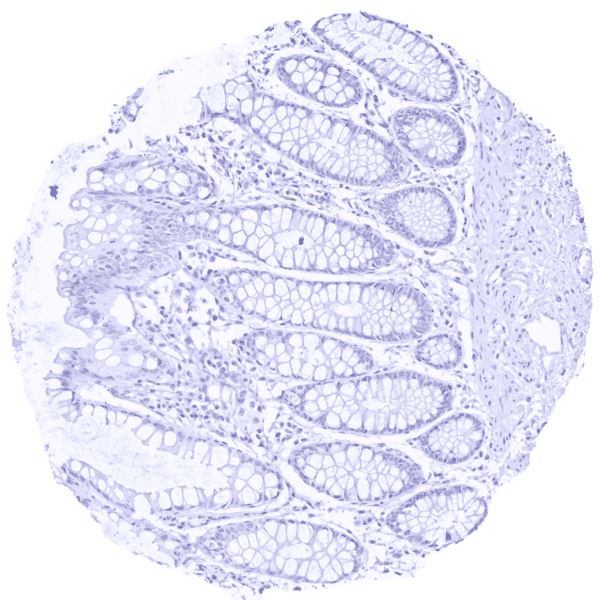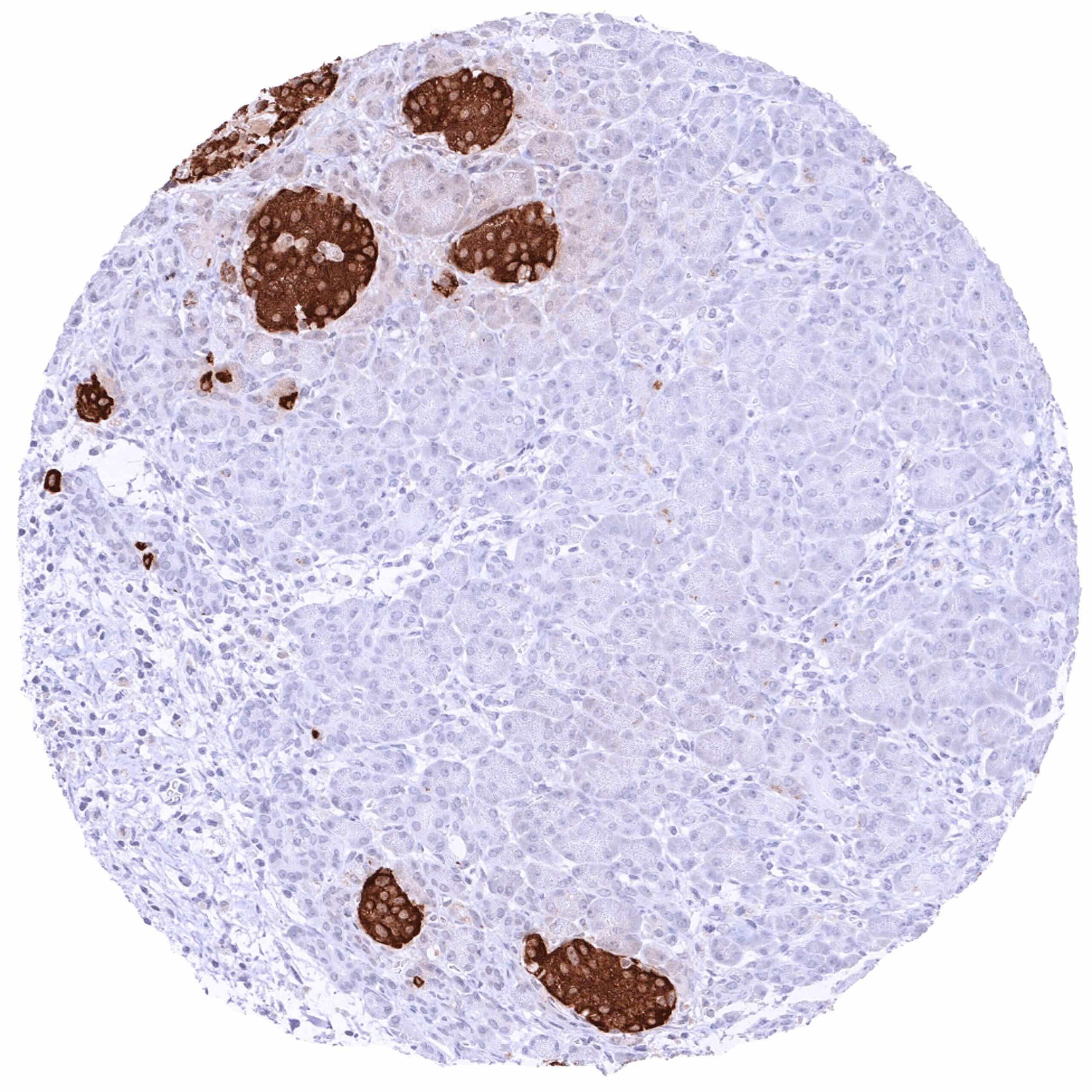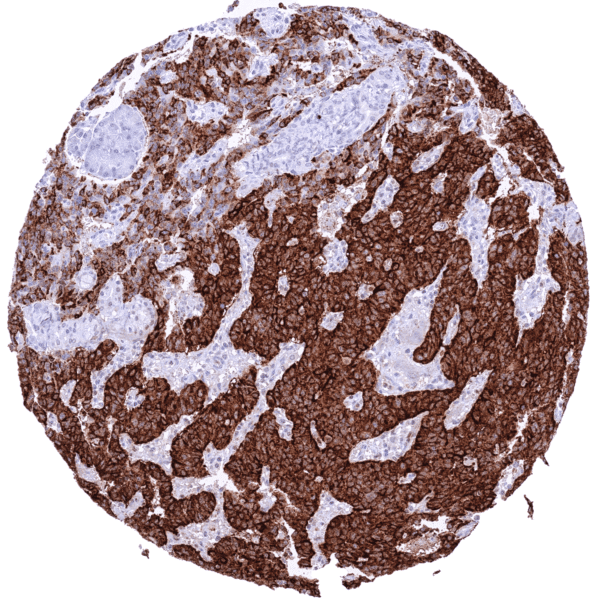Staining Pattern in Normal Tissues
Manual protocol
Freshly cut sections should be used (less than 10 days between cutting and staining). Heat-induced antigen retrieval for 5 minutes in an autoclave at 121°C in pH 7,8 Target Retrieval Solution buffer. Apply HMV308 at a dilution of 1:150 at 37°C for 60 minutes. Visualization of bound antibody by the EnVision Kit (Dako, Agilent) according to the manufacturer’s directions.
| Brain | Cerebrum | Negative | |
| Cerebellum | Negative | ||
| Endocrine tissues | Thyroid | Negative | |
| Parathyroid | Negative | ||
| Adrenal gland | Negative | ||
| Pituitary gland | Negative | ||
| Respiratory system | Respiratory epithelium | Negative | |
| Lung | Negative | ||
| Gastrointestinal tract | Salivary glands | Negative | |
| Esophagus | Negative | ||
| Stomach | Negative | ||
| Duodenum | Negative | ||
| Small intestine | Negative | ||
| Appendix | Negative | ||
| Colon | Negative | ||
| Rectum | Negative | ||
| Liver, Gallbladder, Pancreas | Liver | Negative | |
| Gallbladder | Negative | ||
| Pancreas | Strong cytoplasmic insulin immunostaining of the majority of islet cells. A faint staining of acinar cells surrounding pancreatic islets is likely to be caused by “contamination artifacts“. | ||
| Genitourinary | Kidney | Negative | |
| Urothelium | Negative | ||
| Male tissues | Prostate | Negative | |
| Seminal Vesicles | Negative | ||
| Testis | Negative | ||
| Epididymis | Negative | ||
| Female tissues | Breast | Negative | |
| Uterus, myometrium | Negative | ||
| Uterus, ectocervix | Negative | ||
| Uterus, endocervix | Negative | ||
| Uterus, endometrium | Negative | ||
| Fallopian tube | Negative | ||
| Ovary | Negative | ||
| Placenta early | Negative | ||
| Placenta mature | Negative | ||
| Amnion | Negative | ||
| Chorion | Negative | ||
| Skin | Epidermis | Negative | |
| Sebaceous glands | Negative | ||
| Muscle, connective & soft tissues | Heart muscle | Negative | |
| Skeletal muscle | Negative | ||
| Smooth muscle | Negative | ||
| Vessel walls | Negative | ||
| Fat | Negative | ||
| Stroma | Negative | ||
| Endothelium | Negative | ||
| Bone marrow & lymphoid tissues | Bone marrow | Negative | |
| Lymph node | Negative | ||
| Spleen | Negative | ||
| Thymus | Negative | ||
| Tonsil | Negative |
Details
More product details
More product details
Biology behind
Insulin is an 5,8 kDa peptide hormone composed of 51 amino acids coded by the insulin (INS) gene at 11p15.5. Insulin is the main anabolic hormone of the body. It is only produced in beta cells of the pancreatic islets and its production level is dependent on the blood glucose level. Pancreatic beta cells are sensing the serum glucose levels and secrete insulin in response to a high serum level of glucose, while low glucose levels inhibit insulin secretion. Insulin regulates the metabolism of carbohydrates and fat by promoting the absorption of glucose from the blood into liver, fat and skeletal muscle cells where it is converted into glycogen and/or triglycerides. Insulin also regulates protein synthesis in various tissues. Low serum insulin levels have the opposite effect and result in catabolism, especially of body fat. Decreased or absent insulin results in diabetes mellitus, a condition of high blood glucose (hyperglycaemia).
Protocol Recommendations
Protocol Recommendations
Potential Research Applications
Potential Research Applications
Evidence For Specificity In I H C
Evidence For Specificity In I H C














